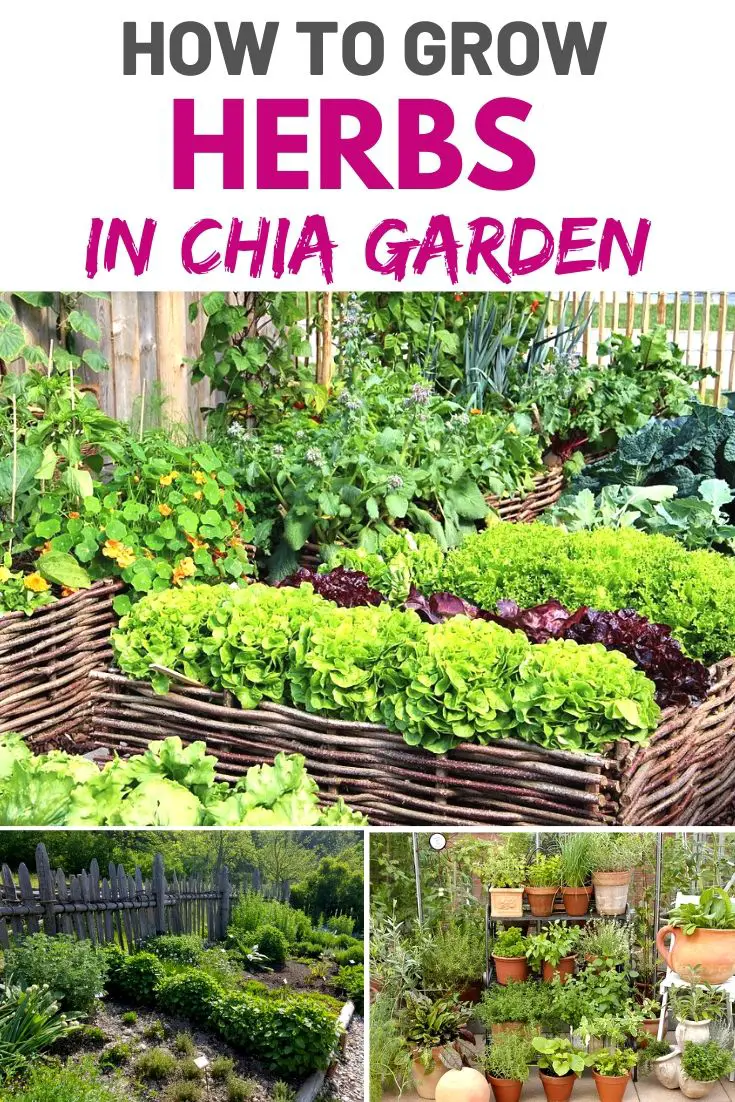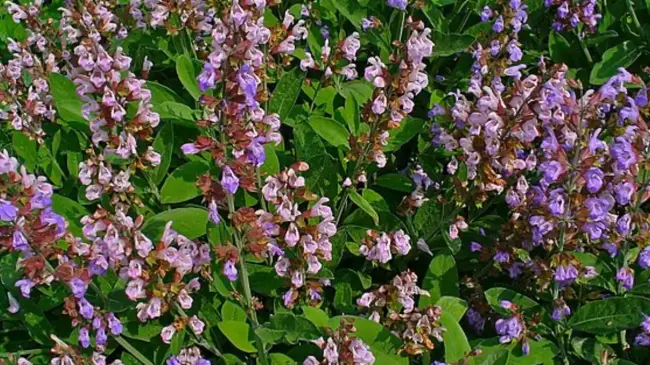Are you tired of buying expensive herbs at the grocery store? Don’t worry, you can easily grow your own herbs right in your own chia garden!
In this article, we’ll show you step-by-step how to successfully grow herbs in a chia garden. Worried about the time and effort it takes? Don’t be! With our practical tips and tricks, you’ll be enjoying fresh, homegrown herbs in no time.
Let’s get started!
Selecting the Right Chia Seeds
When starting your chia garden, begin by carefully selecting the right chia seeds for optimal growth. The quality of your seeds will directly impact the success of your herb garden. Look for chia seeds that are fresh, organic, and free from any signs of damage or contamination.
It’s also important to choose seeds that are specifically labeled for sprouting or gardening purposes, as these will have a higher germination rate. Consider the specific herbs you wish to grow and select chia seeds that are suited to their needs. Some seeds may require more sunlight or water, while others may prefer a specific soil type.
Preparing the Chia Garden Container
To prepare your chia garden container, begin by ensuring it’s clean and free from any debris or contaminants that could hinder the growth of your herbs. Start by washing the container with warm, soapy water and rinse it thoroughly.
Once clean, sterilize the container by wiping it with a solution made from one part bleach to nine parts water. This will eliminate any remaining bacteria or fungi that could harm your herbs.
After sterilizing, make sure the container has proper drainage holes to prevent waterlogging and root rot. Line the bottom of the container with a layer of gravel or small stones to improve drainage. Fill the container with a well-draining potting mix or soil blend specifically formulated for herbs.
Planting the Chia Seeds
After preparing your chia garden container, you can now proceed to plant the chia seeds. To begin, evenly spread a layer of chia seeds on top of the moistened soil. Make sure not to overcrowd the seeds, as they’ll need space to grow.
Gently press the seeds into the soil, ensuring good seed-to-soil contact. Next, lightly water the seeds to provide them with the necessary moisture for germination. Keep the soil consistently moist, but avoid overwatering, as this can lead to rotting.
Place the container in a location that receives ample sunlight, as chia plants require at least 4-6 hours of direct sunlight daily. Within a week, you should start to see the chia seeds sprouting, and in just a few weeks, you’ll have a flourishing herb garden.
Read also: How To Grow Lovage Herb From Seeds.
Providing Adequate Water and Sunlight
Now, you need to ensure that your chia plants receive enough water and sunlight to thrive.
Water is essential for the growth and development of your chia plants. It’s recommended to water them regularly, keeping the soil moist but not overly saturated. Remember to water at the base of the plant to avoid wetting the leaves, as this can lead to fungal diseases.
Additionally, chia plants require adequate sunlight to photosynthesize and produce energy. Place them in an area that receives at least 6-8 hours of direct sunlight per day. If you’re growing them indoors, consider placing them near a sunny window or using grow lights to supplement the natural light.
Nurturing the Chia Seedlings
Once you have provided adequate water and sunlight to your chia plants, it’s important to focus on nurturing the chia seedlings for optimal growth.
To nurture the seedlings, make sure to keep the soil consistently moist, but avoid overwatering, as this can lead to root rot.
Additionally, provide a light source that mimics natural sunlight for at least 12-16 hours a day. This can be achieved using fluorescent lights or LED grow lights.
It’s crucial to maintain the right temperature for the seedlings, around 65-75°F (18-24°C), as extreme heat or cold can hinder their growth. Regularly monitor your seedlings for signs of pests or diseases and take necessary action to protect them.
Transplanting Chia Seedlings to Larger Pots
To ensure optimal growth, you should transplant your chia seedlings to larger pots. As your chia plants mature, their roots will require more space and nutrients to support their growth. Transplanting them into larger pots will provide them with the necessary room to spread their roots and access the nutrients in the soil.
Start by selecting pots that are at least 8-12 inches in diameter and have drainage holes to prevent waterlogging. Fill the new pots with a well-draining potting mix, leaving enough space for the seedlings to be placed at the same depth as before.
Gently loosen the soil around the seedlings, carefully lift them from their current pots, and transfer them to the new pots. Water the seedlings thoroughly and place them in a well-lit area to continue their growth.
Managing Pests and Diseases in the Chia Garden
To effectively manage pests and diseases in your chia garden, regularly inspect your plants for any signs of infestation or illness. Look for wilting leaves, holes in the foliage, or discoloration, as these are common indicators of pest presence.
Aphids, mites, and caterpillars are some common pests that may attack your chia plants. To control these pests, you can manually remove them or use an organic insecticidal soap spray.
Additionally, diseases such as powdery mildew or root rot can affect your chia garden. Ensure proper air circulation by spacing your plants appropriately and avoid overwatering to prevent these diseases. If any plants show symptoms of disease, remove them immediately to prevent further spread.
Regularly monitoring and taking prompt action will help maintain a healthy chia garden.
Harvesting and Pruning Herbs in the Chia Garden
After effectively managing pests and diseases in your chia garden, it’s time to learn how to properly harvest and prune your herbs.
Harvesting herbs at the right time ensures maximum flavor and potency. Begin by identifying mature leaves or stems that are ready for harvest. Gently pinch or cut them off using clean, sharp pruning shears or scissors. Avoid stripping the plant of all its foliage, as this can harm its growth.
Pruning, on the other hand, involves removing dead or damaged leaves and stems to encourage healthy growth and prevent disease. Regular pruning also helps maintain the desired shape and size of your herbs.
Remember to always clean your tools before and after use to prevent the spread of pathogens.
Enjoy the fruits of your labor by using freshly harvested herbs in your culinary creations.
Preserving and Storing Herbs From the Chia Garden
To preserve and store the herbs from your chia garden, you’ll need proper storage containers and a few simple steps.
First, ensure that your herbs are fully dry before storing them. This will prevent mold and spoilage. Once dry, remove any damaged or discolored leaves and discard them.
Next, choose storage containers that are airtight and moisture-resistant. Glass jars with tight-fitting lids work well for preserving herbs. Label each container with the herb’s name and the date of preservation.
Store the containers in a cool, dark place, away from direct sunlight and heat. This will help maintain the flavor and aroma of the herbs.
With proper storage, you can enjoy the flavors of your chia garden herbs throughout the year.
Tips and Tricks for Successful Chia Gardening
To ensure successful chia gardening, maintaining proper soil moisture is crucial. Chia seeds require a consistently moist environment to germinate and grow. One tip is to water the chia garden regularly, ensuring that the soil remains moist but not waterlogged.
A good practice is to check the moisture level by sticking your finger into the soil. If it feels dry, it’s time to water. Additionally, it’s important to avoid overwatering, as this can lead to root rot and other diseases.
Another trick is to provide shade for the chia garden during hot summer days, as excessive heat can dry out the soil quickly. Mulching the soil with organic materials can help retain moisture and regulate soil temperature.
Conclusion
Congratulations! You’re now well-equipped with the knowledge and skills to embark on your chia gardening journey.
With the right chia seeds, container, and care, you can grow a bountiful herb garden right at home.
Remember to provide adequate water and sunlight, nurture your seedlings, and manage any pesky pests or diseases.
With your green thumb and these tips and tricks, your chia garden will flourish, providing you with a fresh supply of herbs to enjoy, preserve, and store.
Happy chia gardening!
Read also:
Did you find this post useful? Would you like to get back to it later? Save THIS PIN below to your gardening or herb garden board on Pinterest! 🙂


